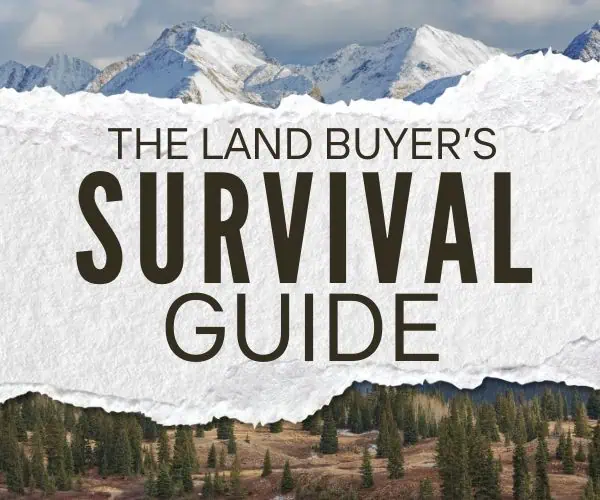REtipster does not provide legal advice. The information in this article can be impacted by many unique variables. Always consult with a qualified legal professional before taking action.
In 2008, the U.S. Congress and President Bush passed the Secure and Fair Enforcement for Mortgage Licensing (commonly known as the “SAFE Act”).
The SAFE Act was part of the larger Housing and Economic Recovery Act of 2008, which came in response to the subprime mortgage crisis that unfolded around the same time.
The idea behind the SAFE Act was to require all 50 states to implement a Mortgage Loan Originator (MLO) licensing and registration system as a way of having a uniform licensing standard throughout the United States.
The SAFE Act was also intended to create and maintain a centralized public database containing all the relevant information on MLOs throughout each state. As Wikipedia explains,
This should allow consumers to perform research, obtain unbiased professional information, and help them choose professionals with whom to deal. Especially, it will aid them in identifying and avoiding bad actors. Eventually, it is hoped, widespread consumer use of the Registry will drive dishonest and incompetent MLOs out of the mortgage loan origination business entirely.
Prior to the SAFE Act, each state had its own licensing standards, but under the SAFE Act, each state was required to bring their legislation in line with the uniform standards required by the SAFE Act. Furthermore, if any state didn't fall in line with these uniform standards, then HUD would ultimately have the power to control the licensing responsibility for any state that didn't conform to the standards (source).
What's the Problem?
When the SAFE Act first hit the scene in 2008, it caused a significant outcry from many real estate investors who had been in the regular practice of using seller financing to sell their properties.
In order to continue providing seller financing on their properties for sale, it would effectively require many (though not all) of these individuals to become licensed mortgage loan originators.
Given the added complexity that comes with maintaining a mortgage loan originator license (which arguably falls outside the scope of what most “mom and pop” real estate investors bring to the marketplace), the SAFE Act cast a wide net that would disqualify many real estate investors from being able to sell their properties on terms.
Another tricky thing about the SAFE Act is that this regulation was originally created at the federal level, but was ultimately intended to be implemented at the state level. Since each state can either, “operate their own systems, subject to stringent federal standards, or they can participate in the Nationwide Mortgage Licensing System and Registry” (source), it's entirely possible (even probable) that each state's version of the SAFE Act will have some variations.
Covering each individual state's rules is beyond the scope of this article – but if you're looking for more information on how the SAFE Act is written in your state, it shouldn't be terribly difficult to find. Simply do a Google search for “State Name” and “SAFE Act” – and you should be able to find what the rules say in each applicable state.
With that said… given that each state is essentially looking at the same set of standards to design their own implementation the SAFE Act (assuming they don't simply participate in the Nationwide Registry), this article is going to focus on the text of Regulation G, the S.A.F.E. Mortgage Licensing Act—Federal Registration of Residential Mortgage Loan Originators, because this is the original electronic code of federal regulations and represents the foundation that the SAFE Act is built upon.
Disclaimer: Before we get any further, please be aware that I am not an attorney and the information in this article should not be interpreted as legal or financial advice. The information below is simply a summary of how I read and interpret the SAFE Act and its related material. This analysis is based on several sources and should not be relied on for any transaction without first consulting your attorney.
The SAFE Act and Vacant Land
Back when the SAFE Act first hit the news, I was more than a little scared.
As someone who was just getting into the land investing business (and was planning to use seller financing as a big part of my business strategy), I had a GIANT pit in my stomach when I heard about how this was going to sabotage the seller financing strategy for so many real estate investors.
Luckily, I had heard from most of my fellow land investors that the SAFE Act wasn't going to affect seller-financed transactions that involved ONLY raw land.
At the time, the news sounded great to me, so I just accepted it and moved on without paying much more consideration to the SAFE Act. It wasn't until just recently that I decided to do a deep dive into Regulation G in an effort to point out very clearly how and why the SAFE Act does not apply to the typical vacant land transaction.
To start with, let's look at Regulation G, §1007.101 – which covers the authority, purpose, and scope of the SAFE Act.
As we already explained above, the “Purpose” of the SAFE Act is as follows,
(b) Purpose. This part implements the S.A.F.E. Act's Federal registration requirement for mortgage loan originators. The S.A.F.E. Act provides that the objectives of this registration include aggregating and improving the flow of information to and between regulators; providing increased accountability and tracking of mortgage loan originators; enhancing consumer protections; supporting anti-fraud measures; and providing consumers with easily accessible information at no charge regarding the employment history of, and publicly adjudicated disciplinary and enforcement actions against, mortgage loan originators.
As this section clearly spells out, the SAFE Act is for mortgage loan originators.
What is a “Mortgage Loan Originator” exactly? Let's look closer at how Regulation G defines this in §1007.102.
Mortgage loan originator means
(1) An individual who:
(i) Takes a residential mortgage loan application; and
(ii) Offers or negotiates terms of a residential mortgage loan for compensation or gain.
Since a mortgage loan originator is defined as an individual who underwrites and negotiates the terms of a residential mortgage loan, let's look closer at how Regulation G defines this in the same section.
Residential mortgage loan means any loan primarily for personal, family, or household use that is secured by a mortgage, deed of trust, or other equivalent consensual security interest on a dwelling (as defined in section 103(v) of the Truth in Lending Act, 15 U.S.C. 1602(v)) or residential real estate upon which is constructed or intended to be constructed a dwelling, and includes refinancings, reverse mortgages, home equity lines of credit and other first and additional lien loans that meet the qualifications listed in this definition. This definition does not amend or supersede 12 CFR 613.3030(c) with respect to Farm Credit System institutions.
Similar to many of the regulations linked to Dodd-Frank, there seems to be a very clear specification that a residential mortgage loan (and thus, all the rules associated with it) is defined as a loan secured by properties with a “dwelling” (currently, or intended).
In accordance with this definition, so let's look closer at how the word “dwelling” is defined in section 103(v) of the Truth in Lending Act, 15 U.S.C. 1602(v).
(w) The term “dwelling” means a residential structure or mobile home which contains one to four family housing units, or individual units of condominiums or cooperatives.
Given this, it appears that when a piece of real estate does not contain a dwelling, and furthermore if there are no immediate plans for the property to contain a dwelling (i.e. – residential structures, mobile homes, individual condominium units or cooperatives), this type of property would NOT be subject to the requirements of the SAFE Act as defined in Regulation G.
However, we should also note that the definition of “Residential Mortgage Loan” includes residential real estate upon which is intended to be constructed a dwelling. In other words, vacant land only falls outside of this definition IF there are no plans to build improvements on the property.
In other words… if you're selling a residential vacant lot with owner financing, it may be wise to include a provision in the loan documentation specifying that the borrower will NOT develop the property until after the loan is paid in full.
In many cases, this kind of pre-construction payoff will most likely happen by default (because most construction lenders won't lend money if the seller has an outstanding deed of trust or land contract memorandum recorded as part of the property's title history), but this isn't necessarily a guarantee. As a protective measure, it would be prudent for most sellers to be abundantly clear about this requirement (in writing) at the time of closing.
Further Reading
Similar to my article on Dodd-Frank, there were a few outside articles and reports that I found quite helpful when compiling this blog post. Here they are (in no particular order):










